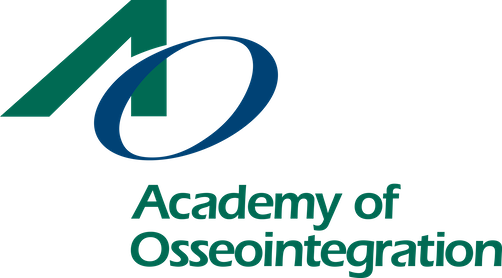-
 Recorded on May 20th, 2025 Description: This presentation explores the expanding role of 3D printing technology in implant prosthetic dentistry, highlighting its impact on clinical workflows and treatment outcomes. Attendees will gain insight into how additive manufacturing is applied to the fabrication of surgical guides and various temporary/definitive prostheses, from crowns to complete-arch frameworks. The talk will include current trends, clinical applications, and patient treatment examples demonstrating the benefits of 3D printing in enhancing precision, efficiency, and patient-specific care. Participants will also learn to differentiate between various types of 3D printers and their suitability for specific prosthodontic applications. In addition, the presentation will guide the selection of appropriate resins used in printing implant-supported restorations. Upon completion of this presentation, participants should be able to: 1) Discuss the extent of use of 3D printers in implant prosthetic dentistry. 2) Identify the types of printers suitable for implant prosthodontics. 3) Select the appropriate type of resins that can be used for 3D printed implant restorations. Burak Yilmaz, DDS, PhD Dr. Burak Yilmaz received his dental and PhD degrees from the Ankara University and his subsequent academic titles at The Ohio State University, College of Dentistry. He was promoted to the rank of Associate Professor with tenure in 2014, and to the rank of Full Professor in 2019. He was involved in teaching dental and postdoctoral students and performing research, while practicing in the Dental Faculty Practice during his time at The Ohio State University. In September 2020, he became the Director of the Digital Dental Technologies Research Laboratory at the University of Bern School of Dental Medicine. He is also an Adjunct Professor at The Ohio State University. He holds a special interest in implant prosthodontics and digital dentistry and published more than 340 research studies and clinical reports. He is the co-author of the Implants Chapter in 5th and 6th editions of “Contemporary Fixed Prosthodontics” textbook by Rosenstiel et al. He serves as the Associate Editor of the Journal of Prosthodontics, is a member of the Editorial Board of the Journal of Prosthetic Dentistry and the Journal of Dentistry, Digital Dentistry Section, and serves on the AO/OF Research Committee for the Academy of Osseointegration. Dr. Yilmaz has indicated the following relevant financial relationships to disclose: Spoken at Meetings: Neoss Implants, Straumann, Kaladent, Received honoraria: Neoss Implants, Saremco, Dentbird, Kaladent Employed by/provided consulting for: Dentbird Performed research sponsored by: DWS/Dfab, Neoss Implants Relevant literature for further information: Çakmak G, Cuellar AR, Donmez MB, Schimmel M, Abou-Ayash S, Lu W-E, Yilmaz B. Effect of Printing Layer Thickness on the Trueness and Margin Quality of 3D-Printed Interim Dental Crowns. Applied Sciences. 2021; 11(19):9246. https://doi.org/10.3390/app11199246 Sabatini GP, Yoon HI, Orgev A, Fonseca M, Molinero-Mourelle P, Yilmaz B, Cakmak G. Complete Digital Workflow for Fabricating an Occlusal Device Using Artificial Intelligence- Powered Design Software and Additive Manufacturing: A Dental Method. Int J Prosthodont. 2024 Feb 21;37(7):275-284. doi: 10.11607/ijp.8941. PMID: 38787592.
Recorded on May 20th, 2025 Description: This presentation explores the expanding role of 3D printing technology in implant prosthetic dentistry, highlighting its impact on clinical workflows and treatment outcomes. Attendees will gain insight into how additive manufacturing is applied to the fabrication of surgical guides and various temporary/definitive prostheses, from crowns to complete-arch frameworks. The talk will include current trends, clinical applications, and patient treatment examples demonstrating the benefits of 3D printing in enhancing precision, efficiency, and patient-specific care. Participants will also learn to differentiate between various types of 3D printers and their suitability for specific prosthodontic applications. In addition, the presentation will guide the selection of appropriate resins used in printing implant-supported restorations. Upon completion of this presentation, participants should be able to: 1) Discuss the extent of use of 3D printers in implant prosthetic dentistry. 2) Identify the types of printers suitable for implant prosthodontics. 3) Select the appropriate type of resins that can be used for 3D printed implant restorations. Burak Yilmaz, DDS, PhD Dr. Burak Yilmaz received his dental and PhD degrees from the Ankara University and his subsequent academic titles at The Ohio State University, College of Dentistry. He was promoted to the rank of Associate Professor with tenure in 2014, and to the rank of Full Professor in 2019. He was involved in teaching dental and postdoctoral students and performing research, while practicing in the Dental Faculty Practice during his time at The Ohio State University. In September 2020, he became the Director of the Digital Dental Technologies Research Laboratory at the University of Bern School of Dental Medicine. He is also an Adjunct Professor at The Ohio State University. He holds a special interest in implant prosthodontics and digital dentistry and published more than 340 research studies and clinical reports. He is the co-author of the Implants Chapter in 5th and 6th editions of “Contemporary Fixed Prosthodontics” textbook by Rosenstiel et al. He serves as the Associate Editor of the Journal of Prosthodontics, is a member of the Editorial Board of the Journal of Prosthetic Dentistry and the Journal of Dentistry, Digital Dentistry Section, and serves on the AO/OF Research Committee for the Academy of Osseointegration. Dr. Yilmaz has indicated the following relevant financial relationships to disclose: Spoken at Meetings: Neoss Implants, Straumann, Kaladent, Received honoraria: Neoss Implants, Saremco, Dentbird, Kaladent Employed by/provided consulting for: Dentbird Performed research sponsored by: DWS/Dfab, Neoss Implants Relevant literature for further information: Çakmak G, Cuellar AR, Donmez MB, Schimmel M, Abou-Ayash S, Lu W-E, Yilmaz B. Effect of Printing Layer Thickness on the Trueness and Margin Quality of 3D-Printed Interim Dental Crowns. Applied Sciences. 2021; 11(19):9246. https://doi.org/10.3390/app11199246 Sabatini GP, Yoon HI, Orgev A, Fonseca M, Molinero-Mourelle P, Yilmaz B, Cakmak G. Complete Digital Workflow for Fabricating an Occlusal Device Using Artificial Intelligence- Powered Design Software and Additive Manufacturing: A Dental Method. Int J Prosthodont. 2024 Feb 21;37(7):275-284. doi: 10.11607/ijp.8941. PMID: 38787592. -
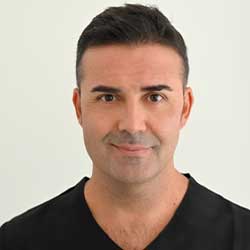 Recorded on May 13th, 2025 Description: This lecture explores the current state of occlusal management within prosthodontics, highlighting advancements in digital workflows, including the integration of intraoral scanning, computer-aided design and manufacturing (CAD/CAM), jaw tracking motion devices and virtual articulation systems. We will discuss how and when these tools enhance or do not enhance the accuracy of diagnosing occlusal relationships and the fabrication of prosthetic devices, ultimately leading to improved functional and aesthetic outcomes for patients. Furthermore, the role of digital occlusal analysis software in assessing and fine-tuning occlusal contacts for optimal performance and comfort will be addressed. This session is relevant for all clinicians who wish to enhance their knowledge in occlusion management in an increasingly digital world. Upon completion of this presentation, participants should be able to: 1) Identify the essential steps to digitalize the clinical data collection of the patient during the diagnostic phase. 2) Explain the digital procedures for aligning files that contain clinical data and the clinical procedures for executing complex prosthetic rehabilitation cases. 3) Discuss the advantages and disadvantages of the reported procedures. Luca Lepidi, DDS, MS Dr. Lepidi graduated from the University of Rome La Sapienza in 2001 (cum laude) and completed Master of Science in Oral Surgery in University of Rome, Tor Vergata. He attended the post-graduate program in Oral Implantology at the University of Chieti and in Gnatology at the University of Milano, Italy. Since then, he has worked intensively in the field of implant prosthodontics and digital dentistry. He also served as a part-time faculty member in prosthodontics, Department of Clinical and Experimental Medicine, University of Foggia Dental School, in Italy since 2011. Dr. Lepidi is Adjunct Professor at the University of Ferrara since 2022 and involved in multiple research projects in the areas of prosthodontics therapy and digital dentistry and is a senior lecturer at several University in Italy and in USA in post-graduate programs. He is an author and co-author of peer reviewed publications and serves as reviewer for multiple journals with high impact factor covering Prosthodontics and Digital Dentistry. Dr. Lepidi has indicated he has no relevant financial relationships to disclose. Relevant literature for further information: The 4D virtual patient: A proof of concept in digital dentistry Lepidi, Luca et al. The Journal of Prosthetic Dentistry, Published online April 13, 2024 Lepidi L, Suriano C, Wang HL, Granata S, Joda T, Li J. Digital fixed complete-arch rehabilitation: From virtual articulator mounting to clinical delivery. J Prosthet Dent. 2022 Mar;127(3):398-403. doi: 10.1016/j.prosdent.2020.08.049. Epub 2020 Dec 13. PMID: 33317830.
Recorded on May 13th, 2025 Description: This lecture explores the current state of occlusal management within prosthodontics, highlighting advancements in digital workflows, including the integration of intraoral scanning, computer-aided design and manufacturing (CAD/CAM), jaw tracking motion devices and virtual articulation systems. We will discuss how and when these tools enhance or do not enhance the accuracy of diagnosing occlusal relationships and the fabrication of prosthetic devices, ultimately leading to improved functional and aesthetic outcomes for patients. Furthermore, the role of digital occlusal analysis software in assessing and fine-tuning occlusal contacts for optimal performance and comfort will be addressed. This session is relevant for all clinicians who wish to enhance their knowledge in occlusion management in an increasingly digital world. Upon completion of this presentation, participants should be able to: 1) Identify the essential steps to digitalize the clinical data collection of the patient during the diagnostic phase. 2) Explain the digital procedures for aligning files that contain clinical data and the clinical procedures for executing complex prosthetic rehabilitation cases. 3) Discuss the advantages and disadvantages of the reported procedures. Luca Lepidi, DDS, MS Dr. Lepidi graduated from the University of Rome La Sapienza in 2001 (cum laude) and completed Master of Science in Oral Surgery in University of Rome, Tor Vergata. He attended the post-graduate program in Oral Implantology at the University of Chieti and in Gnatology at the University of Milano, Italy. Since then, he has worked intensively in the field of implant prosthodontics and digital dentistry. He also served as a part-time faculty member in prosthodontics, Department of Clinical and Experimental Medicine, University of Foggia Dental School, in Italy since 2011. Dr. Lepidi is Adjunct Professor at the University of Ferrara since 2022 and involved in multiple research projects in the areas of prosthodontics therapy and digital dentistry and is a senior lecturer at several University in Italy and in USA in post-graduate programs. He is an author and co-author of peer reviewed publications and serves as reviewer for multiple journals with high impact factor covering Prosthodontics and Digital Dentistry. Dr. Lepidi has indicated he has no relevant financial relationships to disclose. Relevant literature for further information: The 4D virtual patient: A proof of concept in digital dentistry Lepidi, Luca et al. The Journal of Prosthetic Dentistry, Published online April 13, 2024 Lepidi L, Suriano C, Wang HL, Granata S, Joda T, Li J. Digital fixed complete-arch rehabilitation: From virtual articulator mounting to clinical delivery. J Prosthet Dent. 2022 Mar;127(3):398-403. doi: 10.1016/j.prosdent.2020.08.049. Epub 2020 Dec 13. PMID: 33317830. -
 Recorded on May 21st, 2025 Description: Utilizing implant rehabilitation in treating patients with terminal dentition has been an optimal treatment modality in modern dental clinics with numerous scientific support. However, the most favorable survival/success outcome and longevity in such treatment remain challenging due to the complexity of which requiring intellectual knowledge and meticulous clinical execution. To begin with, the diagnosis, treatment plan, surgical intervention and fabrication of definitive prosthesis relies on comprehensive and fundamental prosthetic knowledge. Digital dental equipment, software and biomaterials were introduced in dentistry to reduce the pitfalls clinicians frequently encounter in the conventional world. Nevertheless, the integration of modern dental technologies providing top-quality end results of full mouth implant prosthesis will require understanding and in-depth knowledge for all perspectives. Upon completion of this presentation, participants should be able to: 1) Discuss interdisciplinary treatment planning workflow. 2) Navigate full digital implant protocols including the “NaviSmile Workflow”. 3) Explain the current limitations and latest invention of digital application for digital full arch definitive prosthesis. Selene Kuo, DDS, MS Dr. Selene (Hsin Yu) Kuo received her dual degrees in prosthodontics from Kaohsiung Medical University College of Dentistry (Taiwan) and Columbia University College of Dental Medicine (New York, USA). She then continued her academic appointment as clinical assistant professor in New York University College of Dentistry, Columbia University College of Dental Medicine, and Taipei Medical University College of Dentistry. With her profound prosthodontic-implant knowledge and clinical experience, her vision in digital implant dentistry drives her developed the innovative digital workflow “NaviSmile” featuring full mouth implant rehabilitation. “NaviSmile” workflow which incorporates the “era-breaking” dental navigation machine along with dental CAD/CAM equipment and software which precisely brings back patients’ health and smile. Dr. Kuo devotes herself in academia published numerous publications related to digital dentistry and has been lectured nationally/internationally. She also runs her private practice in Taipei City focusing on digital prosthodontics and dental implants. Dr. Kuo has stated she has no relevant financial conflicts to disclose. Relevant literature for further information: Martins J, Rangel J, de Araújo Nobre M, Ferro A, Nunes M, Almeida R, Moura Guedes C. A New Full Digital Workflow for Fixed Prosthetic Rehabilitation of Full-Arch Edentulism Using the All-on-4 Concept. Medicina (Kaunas). 2024 Apr 26;60(5):720. doi: 10.3390/medicina60050720. PMID: 38792903; PMCID: PMC11123051. Shuo Yao, Xiaojuan Yang, Xiaohui Han, Yanning Xue, Lingyun He, Dong Fang, LianPin Yu, Yali Hou, Shengyun Huang Immediate full-arch rehabilitation of edentulous jaws on 4 or 6 implants using a photogrammetry system: A retrospective study up to 2 years of follow-up, Journal of Stomatology, Oral and Maxillofacial Surgery, 2024, 102202, ISSN 2468-7855, https://doi.org/10.1016/j.jormas.2024.102202. (https://www.sciencedirect.com/science/article/pii/S2468785524004919) Serri, M., Ruggiero, G., Serri, M., Mastrosimone, A., Zarone, F., & Sorrentino, R. (2024). A fully-digital rehabilitation for immediately loaded fixed in-terim complete-arch prosthesis: A case report. Journal of Osseointegration, 16(3), 8–14. https://doi.org/10.23805/JO.2024.661
Recorded on May 21st, 2025 Description: Utilizing implant rehabilitation in treating patients with terminal dentition has been an optimal treatment modality in modern dental clinics with numerous scientific support. However, the most favorable survival/success outcome and longevity in such treatment remain challenging due to the complexity of which requiring intellectual knowledge and meticulous clinical execution. To begin with, the diagnosis, treatment plan, surgical intervention and fabrication of definitive prosthesis relies on comprehensive and fundamental prosthetic knowledge. Digital dental equipment, software and biomaterials were introduced in dentistry to reduce the pitfalls clinicians frequently encounter in the conventional world. Nevertheless, the integration of modern dental technologies providing top-quality end results of full mouth implant prosthesis will require understanding and in-depth knowledge for all perspectives. Upon completion of this presentation, participants should be able to: 1) Discuss interdisciplinary treatment planning workflow. 2) Navigate full digital implant protocols including the “NaviSmile Workflow”. 3) Explain the current limitations and latest invention of digital application for digital full arch definitive prosthesis. Selene Kuo, DDS, MS Dr. Selene (Hsin Yu) Kuo received her dual degrees in prosthodontics from Kaohsiung Medical University College of Dentistry (Taiwan) and Columbia University College of Dental Medicine (New York, USA). She then continued her academic appointment as clinical assistant professor in New York University College of Dentistry, Columbia University College of Dental Medicine, and Taipei Medical University College of Dentistry. With her profound prosthodontic-implant knowledge and clinical experience, her vision in digital implant dentistry drives her developed the innovative digital workflow “NaviSmile” featuring full mouth implant rehabilitation. “NaviSmile” workflow which incorporates the “era-breaking” dental navigation machine along with dental CAD/CAM equipment and software which precisely brings back patients’ health and smile. Dr. Kuo devotes herself in academia published numerous publications related to digital dentistry and has been lectured nationally/internationally. She also runs her private practice in Taipei City focusing on digital prosthodontics and dental implants. Dr. Kuo has stated she has no relevant financial conflicts to disclose. Relevant literature for further information: Martins J, Rangel J, de Araújo Nobre M, Ferro A, Nunes M, Almeida R, Moura Guedes C. A New Full Digital Workflow for Fixed Prosthetic Rehabilitation of Full-Arch Edentulism Using the All-on-4 Concept. Medicina (Kaunas). 2024 Apr 26;60(5):720. doi: 10.3390/medicina60050720. PMID: 38792903; PMCID: PMC11123051. Shuo Yao, Xiaojuan Yang, Xiaohui Han, Yanning Xue, Lingyun He, Dong Fang, LianPin Yu, Yali Hou, Shengyun Huang Immediate full-arch rehabilitation of edentulous jaws on 4 or 6 implants using a photogrammetry system: A retrospective study up to 2 years of follow-up, Journal of Stomatology, Oral and Maxillofacial Surgery, 2024, 102202, ISSN 2468-7855, https://doi.org/10.1016/j.jormas.2024.102202. (https://www.sciencedirect.com/science/article/pii/S2468785524004919) Serri, M., Ruggiero, G., Serri, M., Mastrosimone, A., Zarone, F., & Sorrentino, R. (2024). A fully-digital rehabilitation for immediately loaded fixed in-terim complete-arch prosthesis: A case report. Journal of Osseointegration, 16(3), 8–14. https://doi.org/10.23805/JO.2024.661 -
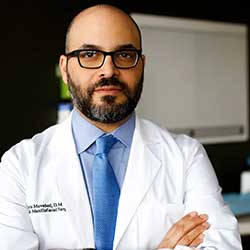 Reza Movahed, DMD Indications for application of total temporomandibular joint replacement (TJR) and maxillomandibular advancement (MMA) are multifaceted and vary from case to case, and it is imperative for the clinician to understand all the contemporary approaches and literature when considering the appropriate treatment for airway disorders, obstructive sleep apnea (OSA) , TMD, craniofacial deformities and trauma. The proper diagnosis must be supported by the necessary studies, including TMJ MRI, CBCT, polysomnography, and clinical findings. The correct option and timing of surgery is paramount to the long-term success of each case. Tailored treatment planning will be discussed in conjunction with cutting edge digital workflow to increase success and predictability of surgical and stable orthodontic outcomes. Upon completion of this presentation, participants should be able to: 1) Explain the various TMJ pathologies requiring TJR. 2) Describe when to use TJR to ensure the most stable biomechanical outcomes. 3) Recognize the available methodologies including clinical assessment, CT scan, and MRI for utilizing TJR as part of the ortho-surgical treatment. Recorded on May 1st, 2025
Reza Movahed, DMD Indications for application of total temporomandibular joint replacement (TJR) and maxillomandibular advancement (MMA) are multifaceted and vary from case to case, and it is imperative for the clinician to understand all the contemporary approaches and literature when considering the appropriate treatment for airway disorders, obstructive sleep apnea (OSA) , TMD, craniofacial deformities and trauma. The proper diagnosis must be supported by the necessary studies, including TMJ MRI, CBCT, polysomnography, and clinical findings. The correct option and timing of surgery is paramount to the long-term success of each case. Tailored treatment planning will be discussed in conjunction with cutting edge digital workflow to increase success and predictability of surgical and stable orthodontic outcomes. Upon completion of this presentation, participants should be able to: 1) Explain the various TMJ pathologies requiring TJR. 2) Describe when to use TJR to ensure the most stable biomechanical outcomes. 3) Recognize the available methodologies including clinical assessment, CT scan, and MRI for utilizing TJR as part of the ortho-surgical treatment. Recorded on May 1st, 2025 -
 Georgios Kotsakis, DDS, MS Peri-implantitis has been receiving attention following recent studies that showed that it is highly prevalent and difficult to manage. This lecture will provide the latest evidence-based information on peri-implant diseases with emphasis on the role that titanium particle release has in destructive bone inflammation around implants. Strategies for prevention and mitigation will be presented through clinical cases. Upon completion of this presentation, participants should be able to: 1) Identify explicit methods of peri-implant evaluation. 2) Explain the role of titanium particles around implants. 3) Discuss the etiology of peri-implantitis. Recorded on April 10th, 2025
Georgios Kotsakis, DDS, MS Peri-implantitis has been receiving attention following recent studies that showed that it is highly prevalent and difficult to manage. This lecture will provide the latest evidence-based information on peri-implant diseases with emphasis on the role that titanium particle release has in destructive bone inflammation around implants. Strategies for prevention and mitigation will be presented through clinical cases. Upon completion of this presentation, participants should be able to: 1) Identify explicit methods of peri-implant evaluation. 2) Explain the role of titanium particles around implants. 3) Discuss the etiology of peri-implantitis. Recorded on April 10th, 2025 -
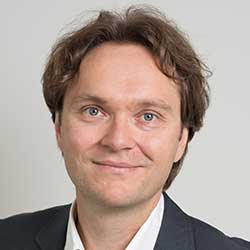 Thomas Hanser, DMD, MSc, MSc, MOM This webinar will describe the indication, scientific background and the clinical implementation of the so-called Split Bone Block Technique (Khoury Technique). This alveolar augmentation technique is based on the use of autogenous bone transplants, which are harvested intraorally using a safe and minimally invasive protocol. A specific preparation of the autogenous bone grafts is demonstrated to increase their biological potential and accelerate their healing. In addition to stabilizing the bone grafts, their hermetic soft tissue closure using innovative flap designs is also shown. In addition to shortening patient treatment time, the grafting technique demonstrated enables predictable and long-term stable volumetric and biological tissue stability in the context of lateral and vertical alveolar ridge augmentation. The philosophy of the Split Bone Block Technique is documented in the webinar through numerous different clinical cases and surgical videos. Upon completion of this presentation, participants should be able to: 1) Select appropriate anatomical structures and instruments for safe and minimally invasive intraoral bone graft harvesting. 2) Describe the specific preparation of autogenous bone grafts to increase their biological potential, accelerate their healing and shorten patient treatment time. 3) Identify the clinical and biological factors for predictable, reproducible, volumetric and biological long-term tissue stability with autogenous bone grafts in lateral and vertical alveolar ridge augmentation. Recorded on April 9th, 2025
Thomas Hanser, DMD, MSc, MSc, MOM This webinar will describe the indication, scientific background and the clinical implementation of the so-called Split Bone Block Technique (Khoury Technique). This alveolar augmentation technique is based on the use of autogenous bone transplants, which are harvested intraorally using a safe and minimally invasive protocol. A specific preparation of the autogenous bone grafts is demonstrated to increase their biological potential and accelerate their healing. In addition to stabilizing the bone grafts, their hermetic soft tissue closure using innovative flap designs is also shown. In addition to shortening patient treatment time, the grafting technique demonstrated enables predictable and long-term stable volumetric and biological tissue stability in the context of lateral and vertical alveolar ridge augmentation. The philosophy of the Split Bone Block Technique is documented in the webinar through numerous different clinical cases and surgical videos. Upon completion of this presentation, participants should be able to: 1) Select appropriate anatomical structures and instruments for safe and minimally invasive intraoral bone graft harvesting. 2) Describe the specific preparation of autogenous bone grafts to increase their biological potential, accelerate their healing and shorten patient treatment time. 3) Identify the clinical and biological factors for predictable, reproducible, volumetric and biological long-term tissue stability with autogenous bone grafts in lateral and vertical alveolar ridge augmentation. Recorded on April 9th, 2025 -
 Mario Beretta, DDS, MSc, PhD The goal of modern implant therapy in aesthetic areas is no longer represented just by the successful integration of the implant or tooth restoration. The final result must be a restoration surrounded by a soft and hard tissue environment in harmony with the existing teeth. Gingival health is among the first fundamental esthetic objectives during treatment planning; it is also essential to consider gingival morphology and contour. The ideal gingival architecture has been described as one that consists of knife-edged gingival margins tightly adapted to the teeth, interdental grooves, and cone-shaped inter- dental papilla. Soft tissue grafting procedures are increasingly performed for a number of indications in conjunction with dental implant therapy. The presentation will identify the role of gingival form in esthetic dentistry. A new volume stable collagen matrix will be presented analyzing research data and clinical indications. The surgical protocol in peri-implant soft tissues management and periodontal plastic surgery will be presented. Upon completion of this presentation, participants should be able to: 1) Identify methods of treatment planning for soft tissues management. 2) Describe proper surgical technique in peri-implant soft tissues management. 3) Recognize the best surgical technique for soft tissues harvesting. Recorded on February 18th, 2025
Mario Beretta, DDS, MSc, PhD The goal of modern implant therapy in aesthetic areas is no longer represented just by the successful integration of the implant or tooth restoration. The final result must be a restoration surrounded by a soft and hard tissue environment in harmony with the existing teeth. Gingival health is among the first fundamental esthetic objectives during treatment planning; it is also essential to consider gingival morphology and contour. The ideal gingival architecture has been described as one that consists of knife-edged gingival margins tightly adapted to the teeth, interdental grooves, and cone-shaped inter- dental papilla. Soft tissue grafting procedures are increasingly performed for a number of indications in conjunction with dental implant therapy. The presentation will identify the role of gingival form in esthetic dentistry. A new volume stable collagen matrix will be presented analyzing research data and clinical indications. The surgical protocol in peri-implant soft tissues management and periodontal plastic surgery will be presented. Upon completion of this presentation, participants should be able to: 1) Identify methods of treatment planning for soft tissues management. 2) Describe proper surgical technique in peri-implant soft tissues management. 3) Recognize the best surgical technique for soft tissues harvesting. Recorded on February 18th, 2025 -
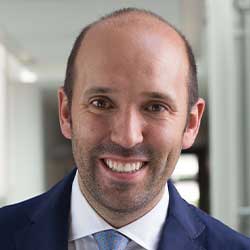 Gianluca Paniz DDS, MS, PhD This presentation will focus on the key restorative aspects that are related to the long-term success of implant restorations and peri-implant tissue stability. Upon completion of this presentation, participants should be able to: 1) Describe the ideal implant positioning in relation to the tooth position and the bone. 2) Explain how to design the implant restoration emergence profile. 3) Select the best restorative material. Recorded on January 15th
Gianluca Paniz DDS, MS, PhD This presentation will focus on the key restorative aspects that are related to the long-term success of implant restorations and peri-implant tissue stability. Upon completion of this presentation, participants should be able to: 1) Describe the ideal implant positioning in relation to the tooth position and the bone. 2) Explain how to design the implant restoration emergence profile. 3) Select the best restorative material. Recorded on January 15th

